The pace of activities in a data center is unrelenting. When it comes to the 400G data center and cloud infrastructure, there is an added emphasis on efficiency, scalability, and speed. Cisco Nexus 400G switch solutions for operational tasks have been developed to ensure high flexibility and performance. Given the severely exploding data challenge enterprises face, having solid architecture in the Cisco 400G data center is becoming “a must-have” rather than “desirable.” The latest switches are built to sustain high bandwidth processing, which is essential in current applications and optimizes data flow while reducing latency. This article focuses on the Cisco Nexus 400G switches and how they have impacted an organization’s data merging processes and overall optimization of the data center networks, enabling next-generation workloads and giving a competitive edge to enterprises. In the light of essential features and technical specifications, the readers will understand how these solutions lead the industry.
Table of Contents
ToggleWhat is the Cisco Nexus 400G Switch?
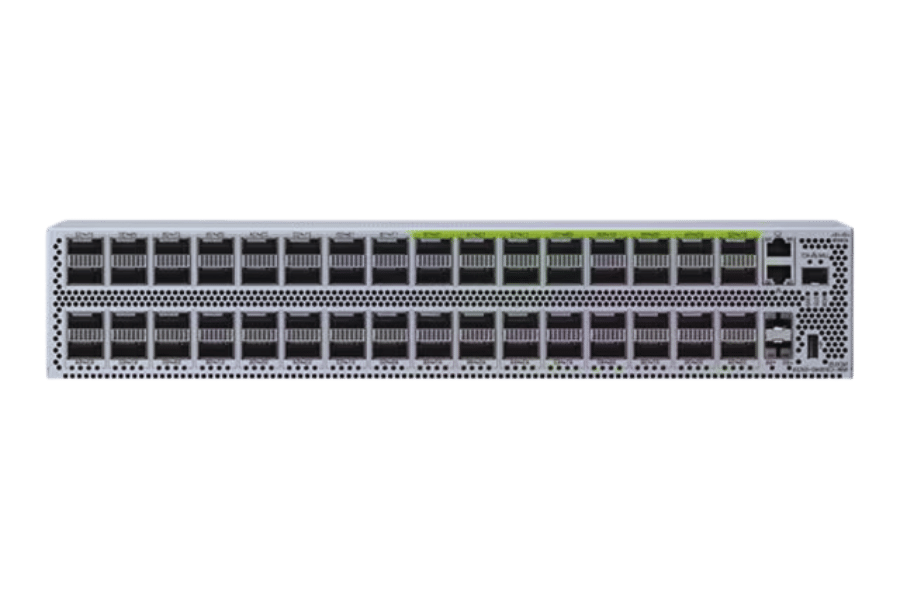
The new Cisco Nexus Switch – 400G is the latest in a new range of switches aimed at the growing demand for higher speeds, higher performance, scalable architecture, and greater efficiency, particularly in 400G data centers. These switches possess 400-Gigabit Ethernet (GbE) features, allowing them to cater to highly high bandwidth applications and large data-centered workloads. They use advanced technologies in the switching design, which provides minimal latency and a smooth flow of data transfers, making them more efficient for modern-day workloads such as artificial intelligence (AI) and machine learning (ML) operations. The Cisco Nexus Switch – 400G offers extreme port density, energy efficiency, and flexible architecture, optimizing network performance and supporting scalable infrastructure.
Key Features of the Cisco Nexus 400G
The advanced needs of a data center can be mated by a comprehensive set of features provided by this series of switches – The Cisco Nexus 400G Switch. They include:
- Increased Bandwidth: These switches meet the demand for high bandwidth required by applications. They support 400-Gigabit Ethernet as such enabling them to provide the needed bandwidth.
- Increased Performance: Focusing on next-generation workloads such as AI and ML, the switch is designed to contain lower latency so that data and information transfer is done quickly, thus avoiding delayed time analytics.
- Higher Port Density: The switch had supports higher port density further catering to the increasing demand for connectivity and growing data traffic.
- Less Power Consumption: Considered to be sustainable, power-conserving elements are embedded in the Nexus 400G to enhance operational efficiency and lower costs.
- Modular design is needed for tackling the challenges of 400G data center and cloud solutions: The switches come with a modular design thus enhancing their adaptability and scalability so that the network infrastructure can effortlessly be extended and upgraded as required.
All these features help to reinforce Cisco Nexus 400G Switches’ positioning as an appealing prospect for improving data center operation and protecting network investments against time.
Understanding the 400G QSFP-DD Ports
The development of the 400G QSFP-DD (Quad Small Form-Factor Pluggable Double Density) ports marked a new milestone in achieving enhanced data rates. Ever since their introduction, these ports have retained a dominant position as they provide double the density of conventional QSFP modules, making it possible to handle higher bandwidth demands. The QSFP-DD interface type can transmit and receive data with the 100G and 200G networks through a backward transmission feature that does not impose structural modifications on the existing systems. Notable specifications that can be highlighted include an eight-lane electrical interface, which has a very high improvement in throughput capability at an Energy efficiency rating. Due to these factors, the 400G QSFP-DD ports are the most suitable for new-generation data centers as they support higher speeds of data transfers over more reliable and dense connections within the complex network structures of the Cisco 400G data center.
How Does the Nexus 400G Enhance Cloud Networking?
The Cisco Nexus 400G switch improves cloud networking by optimally incorporating massive data flows through its 400G QSFP-DD ports. This thus makes it possible to process vast cloud workloads and data-heavy processes efficiently. Further, through the application of automation and virtualization features, the Nexus 400G enhances orchestration, reducing latency and thus improving the entire network’s performance. Besides, its modular architecture allows for easier network scaling and enhances resource distribution to ensure that cloud resources are flexible enough to meet demand changes in the network. Moreover, the switch implements advanced security as data moves through the cloud architecture. All these capabilities allow businesses to scale their operations through better reliability and high efficiency for the cloud.
How Does the Cisco Nexus 400G Benefit Data Centers?
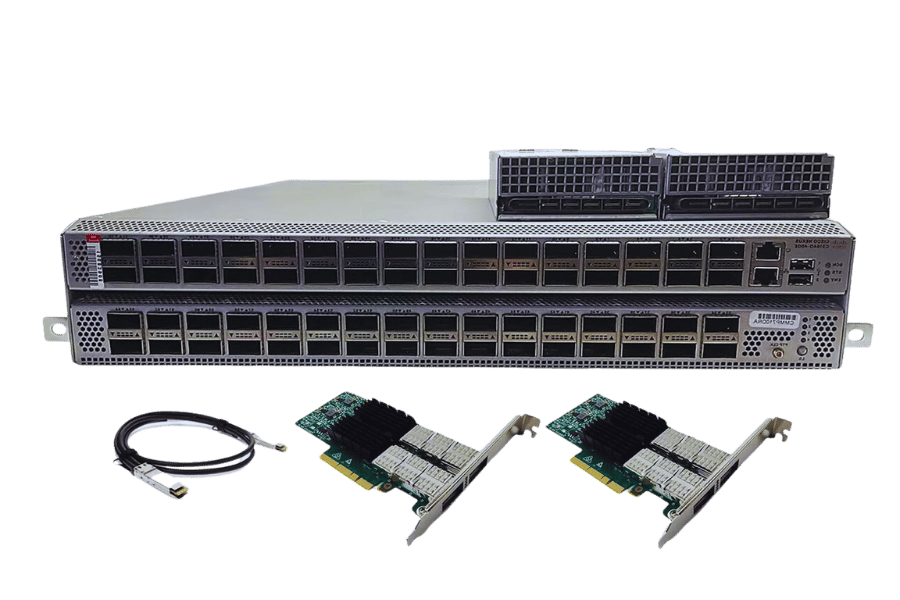
Scalability and High-Density Performance
Providing support for a very large number of devices and connections within a data center, the Cisco Nexus 400G offers scalability and high-density performance that encourages optimal use of space. The high port density of the network allows for the aggregation of many network interfaces, which simplifies and minimizes the physical space occupied by the networks. In addition, the performance of the Nexus 400G switch is also owing to advanced silicon design, which minimizes latency across the networks, thereby meeting the increasing demand for data transfer rates. This capability is critical to the modern requirement for data centers where efficiency in management and fast data transfer for heavy data traffic are commonly required by modern applications. Vertical and horizontal growth allows data centers to expand their resources in line with the present or future business requirements without performance losses.
Improving Data Center Network Efficiency
The Cisco Nexus 400G enhances the data center network operation rate thanks to its high bandwidth, which increases data transfer and improves communication channels. Integration within the Cisco 400G data center with automation tools helps perform tasks in the center with efficient facility and with better chances of lowering the errors associated with manual configurations. Additionally, using energy-efficient technologies within the Nexus 400G helps minimize power usage, reduce operational costs, and even reduce the negative environmental effects. With excellent reliability and large packet buffering, the switch can provide consistent network performance under high loads, thus making it a good choice for data centers that desire to be as efficient as possible.
Integration with Cisco Services for Automation
Cisco Nexus 400G switches work harmoniously with Cisco’s automation-focused services so that they can be used in network management and are efficiently optimized. Using Cisco DNA Center combined with ACI (Application Centric Infrastructure), these switches support automated provisioning, configuration, and monitoring, thus eliminating manual work and its errors. Automation services also support the fast and efficient deployment of security measures and policies on the network, making the operations on the network dynamic and secure. This solution integration lowers the operational complexity and increases the flexibility of data center networks, thus supporting a strong and sustainable IT infrastructure.
What Are the Specifications of the Cisco Nexus 9300 Series?
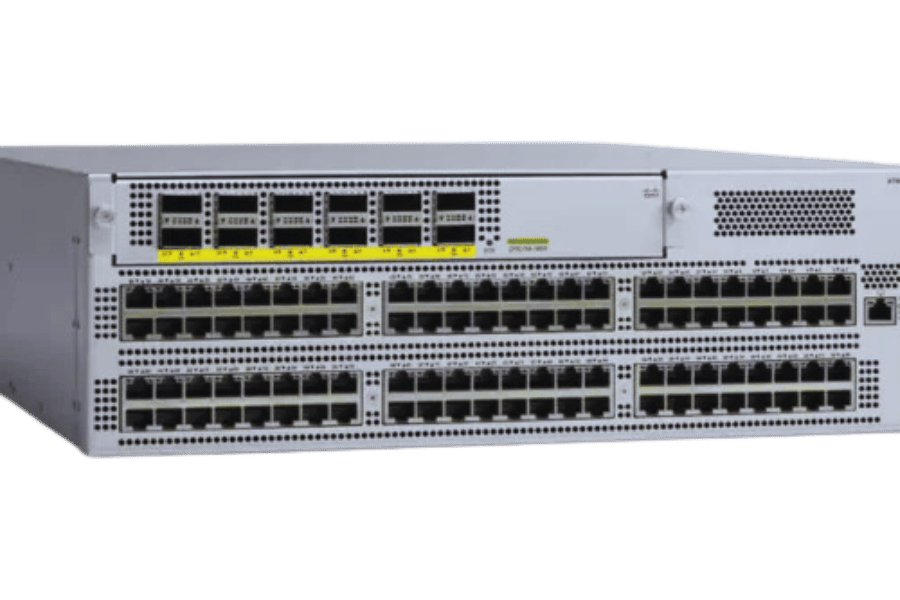
Comparing Nexus 9300 and 9000 Series Switches
In this case, I must consider both the advantages and the differences between the Nexus 9300 and 9000 Series switches. The advantage of the Nexus 9300 Series is that it offers a modular design with multiple line card options, thus making it more flexible according to network requirements. It boasts high-density features, which makes it favorable for deployments in Data Centers that want more considerable scalability and performance. On the other hand, the 9000 Series switches, which also have high-performance capabilities, are frequently tailored to more budget-conscious architectures and broader applications. It is noticeable that both series, with the support of the thick client style, have several typical peculiarities, such as VXLAN support and ACI integration. Still, the 9300 is more sophisticated than designing for the easy, as the complexity and modularity of design capabilities are the key.
The Role of 400G Gigabit Ethernet in Next-Generation Data Centers
Cisco Nexus 400G switches work harmoniously with Cisco’s automation-focused services so that they can be used in network management and are efficiently optimized. Using Cisco DNA Center combined with ACI (Application Centric Infrastructure), these switches support automated provisioning, configuration, and monitoring, thus eliminating manual work and its errors. Automation services also support the fast and efficient deployment of security measures and policies on the network, making the operations on the network dynamic and secure. This solution integration lowers the operational complexity and increases the flexibility of data center networks, thus supporting a strong and sustainable IT infrastructure.
Exploring Modular and Form Factor Options
With the frameworks surrounding data centers of the new era, switching devices have become an integral part of communication network optimization. Ethos Modular switch design methodology presents an effective solution due to varying operational needs requiring specific network configurations. Hence, network resources will be efficiently utilized, expanded, and upgraded when necessary, thus promoting scalability. In this regard, consultants find form factors, weight, and height of switches and routers as crucial in determining the data center rack density and capacity. Fixed compact form factors and chassis-based options of larger sizes also have their various strengths and weaknesses in space efficiency and expansion possibilities, especially in 48p 400G configuration. Companies like Cisco, Arista Networks, and Juniper Networks websites should highlight these options, which will provide flexibility to meet individual customers’ performance, power, and footprint requirements. Looking at modular designs and form factor designs, one can perfectly address modular options that allow modularity to enhance performance metrics, cost metrics, and the future readiness of the data centers in their dynamic nature.
How Does Cisco Nexus 400G Ensure High-Performance Networking?
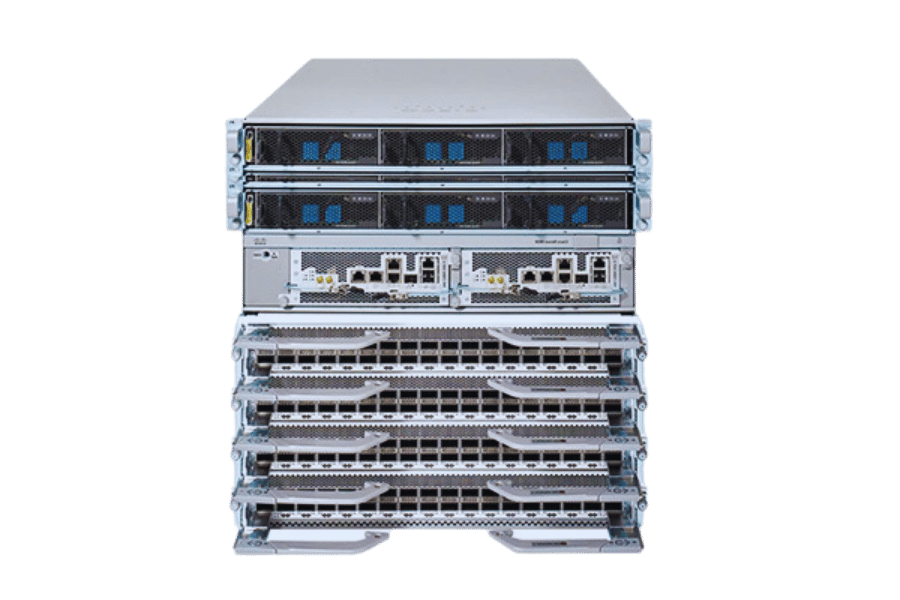
Innovations in Bandwidth and Optics
Cisco Nexus 400G standard hubs integrate multiple new capabilities to maintain high-performance networking in the data centers. Thanks to the growth in bandwidth, the new series from Cisco has been increased to support its data throughput to meet the latest, highly demanding needs while performing in 400 G data centers and cloud applications. Incorporating advanced optics, which includes crystals such as Qsfp-dd technology, gives higher effectiveness and efficiency in interconnects, thereby allowing fast data transfers over short and long distances. Additionally, because of Cisco’s design approach which focuses on power efficiency, impact on operational costs as well as on environment is minimized which also corresponds to the current trends in environmental sustainability. Some of these technologies, as emphasized by the top global authorities in this area and also in the company’s documentation, enable the cradle solutions for the contemporary demands for digital infrastructure and improve the possibility of the networks for future enhancement.
Maximizing Throughput with 32-Port 400G Configurations
The Nexus platform greatly improves throughput with 32-Port 400G configurations that provide high density and are vital in data (Heavy load) operas. In this configuration, the data flow rates are very high, thus reducing the bottlenecks and utilizing the network to its maximum. Each of the 400GbE ports enables 400 Gbps connections, which greatly help transmissions on Cisco 400G data centers and allow a large scale-up in networking. Moreover, these configurations can support a significant number of streams and/or connections simultaneously, all of which operate at low latencies which greatly improve the network performance in the Cisco 400G data center. Using high-density ports such as these allows data center managers to run heavy workloads, meet the increased requirements of current applications, and future-proof the network.
Leveraging Cisco NX-OS for Enhanced Network Management
Any further efforts in the optimization of Cisco NX-OS would be pointless. NPCs and ISSU allow for segregating maintenance windows and deploying software updates without affecting service availability, enhancing overall network security and dependency. Sharding in these areas of the platform’s architecture reduces downtime, enabling most applications and services to be rapidly deployed and maximizing the efficiency of effective network administration. Cisco NX-OS is a highly efficient asset for managing the most demanding database centers. As a product, the Windows-based operating system NX-OS fully supports the requirements for high efficiency in usage and operation.
What Are the Future Trends in 400G Data Center Networking?
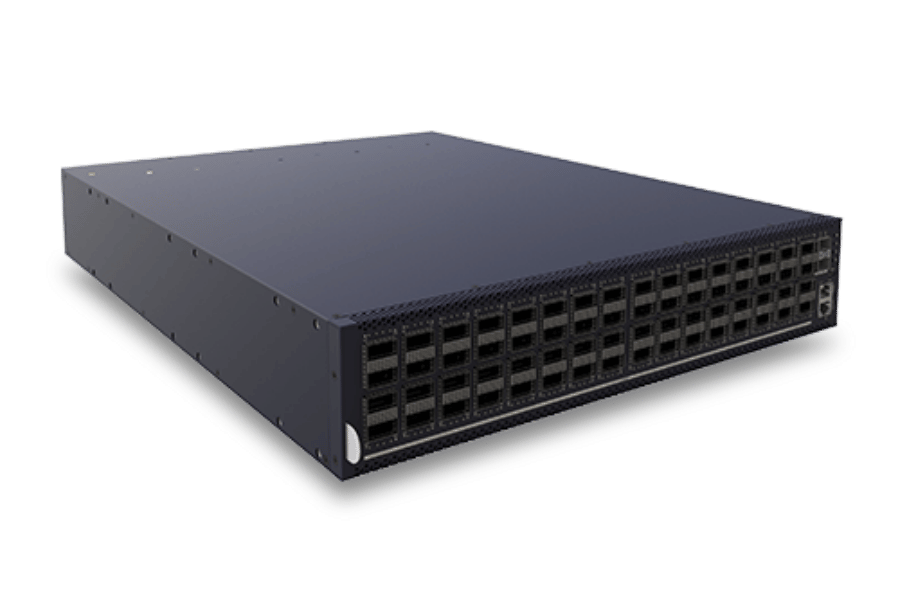
The Evolution of Cloud and Data Center Environments
The transformation of the cloud and data center’s settings is an ongoing development into better scalable, efficient, and automated systems infrastructures. Among the critical defining features of the modern network ecosystem is the prospect of using 400G networking that addresses the growing bandwidth demand due to the expanding AI, machine learning, and IoT data-driven applications. This change goes hand in hand with the advancements in virtualization and container technologies, enabling more dynamic resource provisioning and faster time-to-market for services. In addition, the emergence of edge computing pushes the boundaries of data processing by decentralizing computation and performing it near the data source, thus minimizing distance and enhancing efficiency. For this reason, the cloud and the data center environments are improving in efficiency and meeting the fast-changing demands of enterprise digital ecosystems, increasing creativity and agility in the business.
Cisco’s Role in Next-Generation Data Center Solutions
Cisco’s innovative work never stops, and its cutting-edge solutions are witnessing what has never been seen before. With numerous existing technologies, including networking products, security products, and data management products, Cisco has revolutionized the entire data center. With these technologies in hand which include Intent Based Networking (IBN), and Cisco Application Centric Infrastructure (ACI), the company automatically configures and improves data center environments. Cisco 400G Ethernet solutions are crucial because they make it possible to connect at greater speeds and provide more bandwidth to meet ever-growing data center scalability needs. Also, protecting data requires a comprehensive solution, and Cisco security measures do just that by adapting to any threats. Cisco has a deep dedication to research and development activities, and this helps them prepare today’s data centers for the demands of tomorrow’s world, which is always evolving.
Adapting to Increased Demand for High Bandwidth
Advances in data transmission capacities are essential as the growing demand for high bandwidth is exceedingly difficult to meet under present circumstances. Solutions like 5G technology are rapidly becoming standard within companies as it boosts their uploads and downloads hundreds of times over, assuring the transfer of large amounts of data in an innovative, frictionless ecosystem to various IoT devices. Furthermore, Optical fiber networks are essential because they supply the necessary high-speed internet capable of transmitting huge amounts of data quickly. Also, networks with SDN and NVF have more flexible architecture and are scaled up to allow changing bandwidth requirements. These technologies combine to enable enterprises to build and manage strong networks with the required capacity to meet the current technological expectations.
Reference Sources
Frequently Asked Questions (FAQs)
Q: What are the key features of the Cisco Nexus 9000 Series switches?
A: The features of the Cisco Nexus 9000 Series switches are optimized for data center usage as high-performance data center switches aimed at building scalable data centers. They feature support for 400 Gigabit Ethernet, which offers tremendously high-bandwidth density networking infrastructure. These switches are great for leaf and spine architectures and as cross-cloud deployment as they provide 400G and 100G ports for various networking requirements.
Q: In what ways does the Cisco Nexus 400G switch differentiate data center and cloud networking from other solutions?
A: Cisco’s 400G data center switches, including the Nexus 9000 Series, are the game changers in the switching market due to the high speed and capacity they deliver. These switches have up to 48 ports of 400G, thus enabling mass-scale data centers to meet the needs of cloud computing, AI/ML, and HPC applications. They lay the groundwork for next-generation data center designs with their high port count, low latency, and low power consumption.
Q: Cisco Nexus 3432D-S — What kind of device is it, and where does it belong in the matrix of 400G switches?
A: The Cisco Nexus 3432D-S is a high-performance fixed switch designed for the Nexus 9000 Series. It has 32 ports of 400G, making it useful in cloud and datacenter networking environments with low latency and high bandwidth requirements. However, this switch is best suited for Spine deployments in leaf-spine architectures, as it gives adequate performance for large-scale data centers.
Q: What makes Cisco Nexus 9300-GX switches appropriate for scalable data center environments?
A: Cisco Nexus 9300-GX switches are appropriate for scalable data centers because they offer a variety of 400G and 100G high-density possibilities. Such switches grant the possibility of designing vast-scale leaf-spine architectures that are adaptable to different port speed requirements for different applications. With their performance and scalability, they are efficiently positioned to address the ever-increasing data traffic in contemporary data centers and cloud applications.
Q: Why should one choose 400 Gigabit Ethernet for their data center switch solutions?
A: There are multiple benefits of using 400 Gigabit Ethernet for data center switch solutions, a few of them being higher bandwidth, lower power consumption per bit, and better connectivity scalability for 400G optical interface quad small form-factor pluggable connections. It facilitates the overall data transfer process in line with the increasing scale of operations like Data-intensive Applications, Cloud services, and AI/ML workloads. The increased bandwidth with range also aids in the consolidation of networks, thereby decreasing the number of switches in the data center, if any.
Q: How does the Cisco 400G data center switch solution fit in a hybrid cloud environment?
A: Cisco’s 400G data center controller solution, which includes the Nexus 9000 Series, enhances hybrid cloud environments because of its performance, virtue, and elasticity. The switches can connect data centers to the cloud, enabling work movement and seamless data exchange between the data center and the cloud. They also enhance the support and management of different software-defined networks, which will allow supervision over hybrid cloud structures, orchestration, and other functions.
Q: What brings Cisco Nexus® switches into a magnifying view when an ability to set up a networking infrastructure with high-density demand goes out?
A: Cisco Nexus® switches, however, including 400G models, can be used where high-density and large-scale networking infrastructure is required WTSDue to the high port density of the models, which support multiple speed interfaces, including 400G and 100G. These switches offer deep buffers combined with low delay, enabling versatility in handling data flows. Excellent fit for high-performing computing systems, large-scale data centers, and cloud service providers requiring resilient and agile networking design.
